War Comes to Florida: Military
Since the 16th century, the presence of military garrisons, forts, and soldiers has been a familiar sight in Florida. The decades of the 1930s and 1940s, however, transformed Florida and its dependency upon the federal government and military spending. Never had so many soldiers and sailors landed on sandy beaches, flown over the peninsula, and trained in luxury hotels. The New Deal may have supplied the seed money for scores of municipal and regional airports, but Pearl Harbor intensified and magnified the military’s presence across the state.
The most tangible evidence of war in Florida was the explosive growth in military spending and construction. By the end of the war, Florida laid claim to 172 military installations. The size, scale, and scope of the bases, air fields, and naval facilities were extraordinary. The Sunshine State was home to as many as two million servicemen and women.
War came to Florida in ways few residents could have imagined in 1941. German U-boats, taking advantage of U.S. strategic blunders and the strategic importance of the Gulf Stream, launched “Operation Drumbeat” in January 1942. In a stunning series of successes, German submarines sank 24 vessels off Florida’s East and Gulf coasts. Residents and tourists at Jacksonville Beach and Miami Beach watched with horror as tankers burned and thick oil coated the white sand. Ultimately, the convoy system and the use of radar effectively ended German supremacy of the Atlantic. Specially designed anti-submarine planes flew from Florida air fields. At the Fort Lauderdale Naval Air Station, George Herbert Walker Bush learned to fly TBM-Avengers.
From a 1930s runway to 734 square-mile aviation complex, Eglin Field in Okaloosa County exemplified the importance of political clout (Crestview Congressman Robert Sikes). Camp Blanding, conceived in 1939 as a $700,000 summer camp for the Florida National Guard, expanded dramatically with the coming of war. Clay and Bradford counties, historically two of the poorest entities in Florida, suddenly brimmed with construction workers, G.I.s, and reporters. On Florida’s southernmost tip, war rejuvenated Key West. The future of Key West seemed bleak in 1933, but by the early 1940s, a surplus of navy personnel and war workers made finding an apartment nearly impossible. Key West, like Tampa, Miami, Jacksonville, and Pensacola, seemed like a garrison town.
War is mercurial. By late 1945, cities dreaded the word “deactivated.” But Floridians proved adept and resourceful in finding new homes for old bases. Drew Field became Tampa International Airfield. The blimp base in Coconut Grove became Miami Metro Zoo. The long runways at Sebring’s Hendrix Field became the runways for the Sebring Raceway.
Images
-
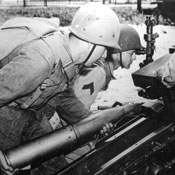
- Gun crew loading and sighting 105 mm field piece at Camp Blanding
-
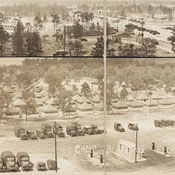
- Camp Blanding Panoramic
-
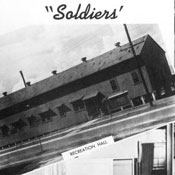
- "Pleasure Time" activities for the soldiers: Tallahassee, Florida
-

- P-39 fighter planes
-
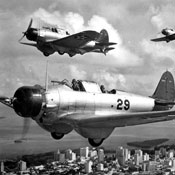
- U.S. Navy dive bombers: Miami, Florida
-
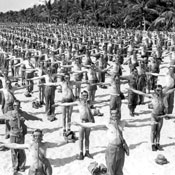
- Soldiers performing exercises on the beach: Miami Beach, Florida
-
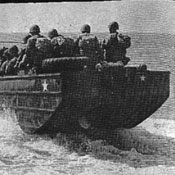
- Training in DUKWs at Camp Gordon Johnston
-
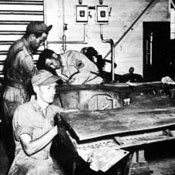
- Soldiers being trained in a variety of tasks at Dale Mabry Field
-

- Parachute department of Dale Mabry Field: Tallahassee, Florida
-
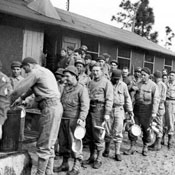
- Chow line at Camp Gordon Johnston during World War II
-
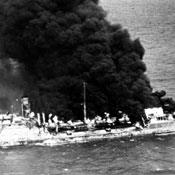
- Tanker "Gulfland" burning in the water: Hobe Sound, Florida
-
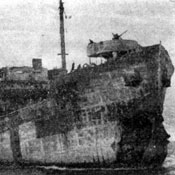
- Salvaged tanker "Gulfland": Hobe Sound, Florida
-

- Salvaging of a British warship
-
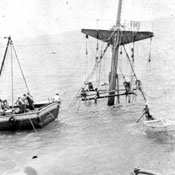
- Salvaging of a British warship
-
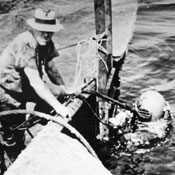
- "Gulfland" salvage operation by Captain Brown : Hobe Sound, Florida
Documents
- Joseph R. Drane, Jr. To Enter Service: June 2, 1943
- Article about local St. Petersburg man entering active service with the United States Navy. Note that Drane is one of 10 first cousins to enter the service during the war.
- Courtesy of St. Petersburg Times June 2, 1943
- Army Air Forces Bid Farewell to St. Petersburg, Say Citizens Played Big Part in Post's Success: July 25, 1943
- Article about Army Air Force closing technical training command in St. Petersburg. AAF offers thanks to community of St. Petersburg in helping make the soldier training successful.
- Courtesy of St. Petersburg Times July 25, 1943
- Blackout orders for Palm Beach, Florida
- During World War II, to deter air and submarine attacks, the Federal government's Office of Civilian Defense and the various State Defense Councils enforced a variety of blackout restrictions. This was particularly important along Florida's long, exposed coastline, where lights from houses, hotels, and amusement parks could silhouette allied merchant ships and make them inviting targets for German U-Boats. Civil Defense wardens enforced these blackout regulations, which remained in effect for the duration of the war. Reproduced here are blackout orders issued by Florida Governor Spessard Holland and the commanding officer of Key West and distributed by the Civilian Defense Council of Palm Beach.
- Courtesy of the Florida State Archives
- This is War, Stop Griping and Go to Biting
- A broadside urging Americans to take stock and fight for victory. Broadsides are traditionally considered to be large, one-sided printed posters used for public communication. These were usually posted in prominent public spaces such as churches, street corners, and town halls. Editor's Note-The above headline was inspired by Mr. Howard Macfarlane's radio talk last Thursday evening. Every real American should read it and remember it from now on for the "duration".) By Howard P. Macfarlane.
- Courtesy of the Florida State Archives
-
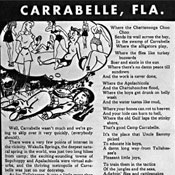
- Carabelle, FL or The Rude Awakening
-
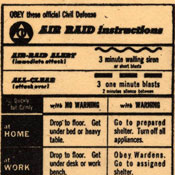
- This could be a bomb, but it isn't. Civil defense air raid instructions
-
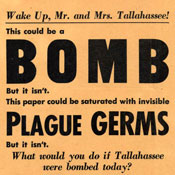
- Wake Up, Mr. and Mrs. Tallahassee!
